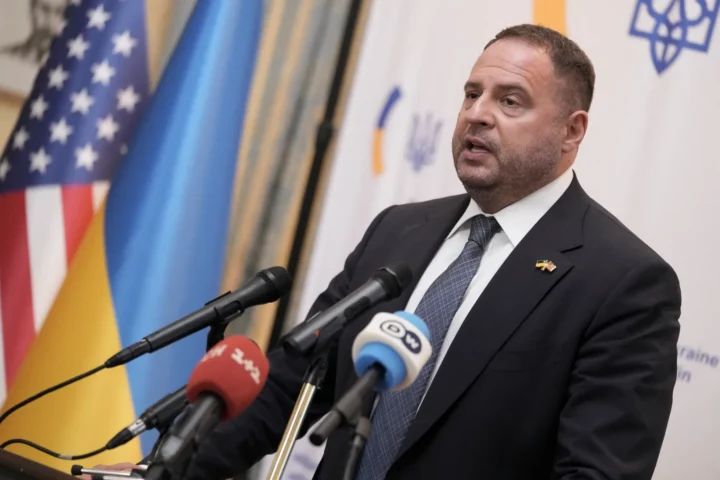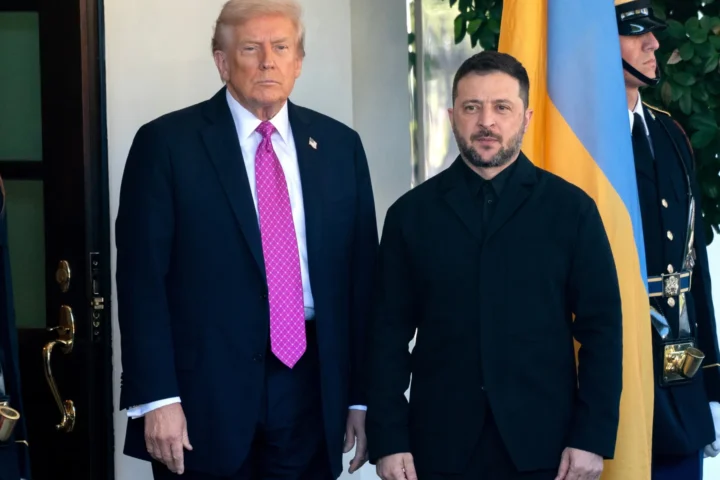The United States is reportedly seeking a far-reaching new agreement to secure control over Ukraine’s most valuable natural resources—especially critical minerals and major energy infrastructure—while providing no explicit security guarantees to Kyiv in return. According to The Financial Times (FT), which claims to have reviewed the latest draft of the proposal, this approach marks a noticeable intensification of President Donald Trump’s earlier demands and has raised alarms among top Ukrainian officials.
Below is a detailed overview of the situation, reflecting all key points mentioned in the original report.
A Vast Expansion of Previous Demands
Under this new proposal, transmitted to Ukrainian leaders on Sunday, the US aims to assume significant control over Ukraine’s oil, gas, and mineral resources as well as associated energy assets. This goes well beyond an initial joint economic framework that was formulated last month in an effort to:
- End the ongoing Russian invasion.
- Secure American reimbursement for vast military support extended to Ukraine.
American officials appear intent on overseeing Ukrainian resource projects and keeping direct veto authority over how profits are distributed. Senior Ukrainian representatives, however, view these terms as a severe threat to their nation’s sovereignty and independence.
Supervisory Board and Income-Sharing Arrangement
Central to the proposed agreement is the creation of a supervisory board that would manage a “joint investment fund.” This entity is expected to collect revenue from Ukrainian oil, gas, and mineral initiatives and then split the proceeds between the United States and Ukraine.
- Board Composition: Of the five seats on the supervisory board, three would be American appointees, effectively giving Washington the final say on critical fund decisions.
- Previous Contributions as Capital: The draft language reportedly states that “the contributions of the United States following the full-scale Russian invasion of Ukraine in 2022” are to be recognized as equal to direct financial investments in the new partnership.
According to The Financial Times, US Treasury Secretary Scott Bessent told Fox News he believes a final deal could be ready to sign as early as next week. However, several high-ranking Ukrainian officials remain skeptical. One official told the FT the plan is “unfair,” and another equated it to “robbery.”
Concerns Over Sovereignty and Economic Dependenc
Critics within the Ukrainian government fear that the provisions would substantially undermine Kyiv’s authority over its own resources, route profits outside the country, and leave Ukraine more financially reliant on Washington.
In response, the Ukrainian government has called in legal experts to examine every detail of the draft. As part of a potential counter-offer, they are seeking to revise clauses they believe are weighted too heavily in favor of the United States.
“We are working to ensure that the agreement reflects all of our interests and is in the spirit of strategic partnership,”
— Yulia Svyrydenko, Ukraine’s First Vice-Prime Minister and Economy Minister
Svyrydenko stressed that any final version would need approval by the Ukrainian parliament, a requirement that could complicate the Trump administration’s ambition to conclude negotiations swiftly.
Mounting Pressure for a Ceasefire Agreement
Ukraine has voiced growing frustration at the relentless US pressure to strike a deal with Russia still occupying significant Ukrainian territory. President Volodymyr Zelenskyy, speaking in Paris, expressed that Washington’s demands have shifted repeatedly.
While acknowledging the importance of US support, Zelenskyy underscored his unease about rushing into an agreement that might compromise Ukrainian security or economic autonomy.
The Previous Framework and Current Escalation
The newly proposed arrangement builds on, but also supersedes, a preliminary framework signed off last month. Initially, there was a plan for Ukraine to contribute 50% of mineral resource profits to a shared fund. That earlier deal stalled after an Oval Office meeting between Trump and Zelenskyy ended poorly.
Under the updated terms, the scope is vastly expanded:
- The agreement would encompass all resource-related endeavors, including state-led initiatives and those undertaken by approved private or state-owned enterprises.
- Infrastructure such as roads, railways, pipelines, ports, and processing facilities connected to resource extraction would be included.
- Income generated would be converted into foreign currency and placed under management of the US-majority board.
- In cases of delays or disputes, Ukraine would be held responsible for providing compensation.
- The United States would receive royalties before Ukraine, benefiting from a 4% premium, and would also retain the power to veto third-party resource sales.
Nuclear Energy Left Out for Now—But Not Forever?
Although this proposal does not specifically cover US ownership of Ukraine’s nuclear energy infrastructure (an idea previously floated by Trump), Ukrainian officials remain wary. There is concern that nuclear assets might become a bargaining chip in future negotiations.
One Ukrainian insider told The Financial Times the nuclear issue had indeed come up in prior discussions but was deliberately removed from this latest iteration. Whether it stays off the table in future talks remains unknown.
Outlook and Next Steps
US officials have been relatively tight-lipped regarding the updated proposal. The State Department offered no immediate comment, while a Treasury spokesperson underscored the importance of a swift conclusion to negotiations, praising a potential agreement as a “vital” step towards securing a “lasting peace for both Ukraine and Russia.”
For the moment, Kyiv’s leadership faces a delicate balancing act—grateful for Washington’s support yet unwilling to relinquish control of strategic resources. As negotiations continue, it remains to be seen what concessions both sides might be willing to make in the quest for an end to the conflict.
This article was prepared based on materials published by The Financial Times. The author does not claim authorship of the original text but presents their interpretation of the content for informational purposes.
The original article can be found at the following link: The Financial Times.
All rights to the original text belong to The Financial Times.





















